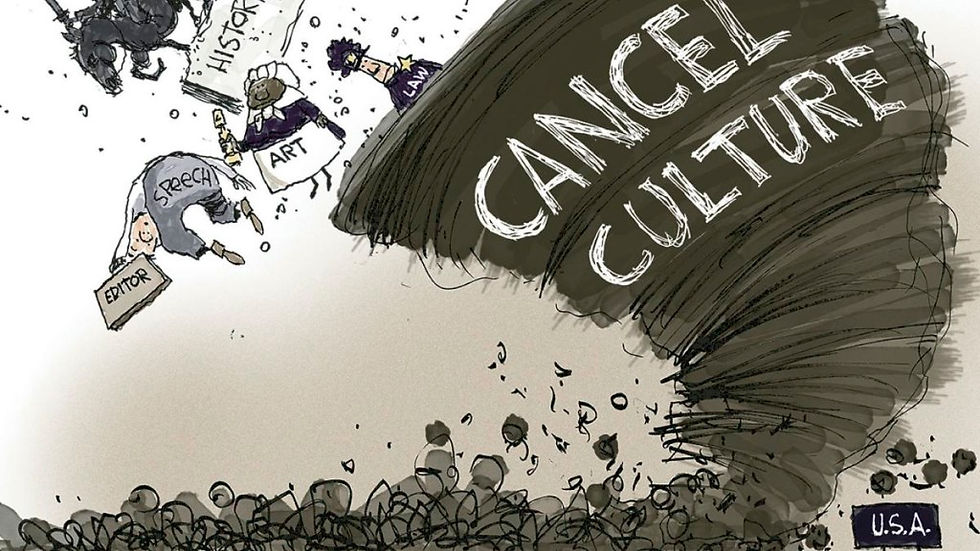Real Life as an Anime
- Ron Baron
- Dec 30, 2020
- 4 min read
Updated: Jan 1, 2021

If you’re a ‘boomer’ and not paying close attention, you may not know what ‘cosplay’ is. Maybe you heard the word, and if not for the pandemic, you might have enjoyed seeing a granddaughter dress as a Japanese ‘anime’ character. An ‘anime’ is a type of Japanese cartoon with roots beginning in 1917. If I were to attempt a characterization, I’d say the characters are lovely boys and girls with larger than life eyes and flowing mains of straight hair nearly every color but brown or blond (pink, blue, and green are in! You may have noticed). Throughout the globe, young girls and boys have imagined themselves as ‘anime’ or ‘manga’ characters (‘manga’ are Japanese cartoon characters first popularized in the 19th century).
Because anything related to ‘anime’ and ‘manga’ is hot, colorful clothing, and eye paint, and hair color sprays and wands and many other items are delivered like everything else these days, by a man or woman driving a brown van. Anime allows our little munchkins to experiment with make-believe and fantasy aboard a light blue and sparkly unicorn. Dress up and become another limited only by your imagination. The act of dressing up and role-playing a cartoon character is called ‘cosplay.’
I know what you are thinking- ‘cosplay’ is not new. Of course not. Children have been dressing up since the loss of primate hair due to evolution- at least that’s the theory some folks want us to believe. For decades, Disney characters were all the rage. Who of us didn’t get or give a Mickey Mouse onesie for being potty trained? Some adults still visit Disneyland spending the day in costume as Mickey or Minnie or being Goofy. And many young adults enjoy ‘cosplay’ as ‘anime’ or popular movie characters (Star Wars is still popular). ‘Cosplay’ adults have no problem filling up convention centers, dressing up, and selling things that might add to the fantasy. It’s a billion-plus dollar industry. Profitable but all rather innocent, I think.
Eventually, we mostly mature into adults forms and accept our position in life. The name we’re given, our birthdate and birthplace, our gender and race, our intellect and interests are all considered fixed features of who we are. If we accept those personal features, we can live a mostly authentic life without considering all the other ways we complicate our existence.
Yet, we hear of a growing number of adults who have found it convenient, perhaps even beneficial, to continue well into adulthood with the ‘cosplay.’ College professors and politicians and community organizers- white people claiming to be colored people, and Americans claiming to be foreign-born as if identity is just part of a cynical public relations project.

Hilaria and Alec Baldwin- wikipedia
In the case of Hilaria Baldwin, wife of actor/agitator Alec Baldwin, she apparently found life more exciting by fibbing about her name, her place of birth, and even her native language. She possibly thought herself more exotic with a Spanish accent and pretending to speak English poorly despite being born, raised, and educated in Boston. For Hillary (her real name), evidently with her husband’s blessing, life is about role-playing where your identity is whatever you wish it to be.
Today, we have social media technologies that seduce many into crafting a persona that is far more exotic and exciting than the one actually being lived. Click ‘send’ and who’s to know? Social media has lured many into thinking that carefully curated pictures and personal virtue claims are how to game the game. Is it any surprise that social media posts are gathered up as evidence in 81% of divorce cases? Of course not- it’s where the lies are told and now live into eternity.
With so many believing it necessary to create a persona as shallow as a Hollywood movie set, we’re left wondering if an authentic life is still possible or even preferred.

A stuffed Rabbit, a character in a child’s storybook written by Margery Bianco, pondered the same question. The Rabbit wanted to know what it would take to be loved by his owner. Was he ‘real’ enough? I’ll let Ms. Bianco tell the rest.
“Real isn’t how you are made,” said the Skin Horse. “It’s a thing that happens to you. When a child loves you for a long, long time, not just to play with, but REALLY loves you, then you become Real.”
“Does it hurt?” asked the Rabbit.
“Sometimes,” said the Skin Horse, for he was always truthful. “When you are Real you don’t mind being hurt.”
“Does it happen all at once, like being wound up,” he asked, “or bit by bit?”
“It doesn’t happen all at once,” said the Skin Horse. “You become. It takes a long time. That’s why it doesn’t happen often to people who break easily, or have sharp edges, or who have to be carefully kept. Generally, by the time you are Real, most of your hair has been loved off, and your eyes drop out and you get loose in the joints and very shabby. But these things don’t matter at all, because once you are Real you can’t be ugly, except to people who don’t understand.”
― Margery Williams Bianco, The Velveteen Rabbit




I love how I’m getting so edumacated reading your stuff. When did you get so smart?? This isn’t a public post is it HA!